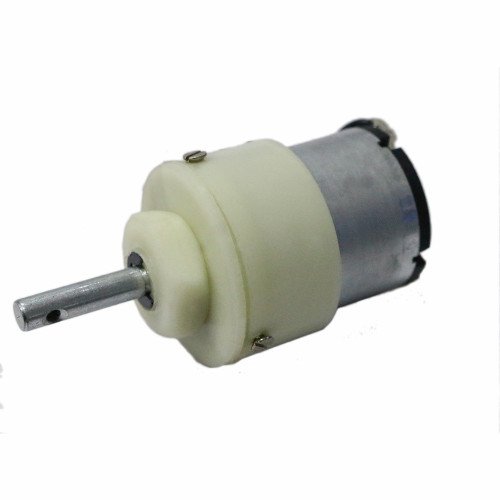DC MOTOR (Electric Motor)
An electric motor is an electromechanical device that convertselectrical energy into mechanical energy.
Most electric motors operate through the interaction of magnetic fieldsand current-carrying conductors to generate force. The reverse process, producing electrical energy from mechanical energy, is done by generators such as an alternator or a dynamo; some electric motors can also be used as generators, for example, a traction motor on a vehicle may perform both tasks. Electric motors and generators are commonly referred to as electric machines.
Electric motors are found in applications as diverse as industrial fans, blowers and pumps, machine tools, household appliances, power tools, and disk drives.
DC Motor Working:
Direct current (DC) motors are widely used to generate motion in a variety of products. Permanent magnet DC (direct current) motors are enjoying increasing popularity in applications requiring compact size, high torque, high efficiency, and low power consumption.
In a brushed DC motor, the brushes make mechanical contact with a set of electrical contacts provided on a commutation secured to an armature, forming an electrical circuit between the DC electrical source and coil windings on the armature. As the armature rotates on an axis, the stationary brushes come into contact with different sections of the rotating commentator.
Permanent magnet DC motors utilize two or more brushes contacting a commutator which provides the direct current flow to the windings of the rotor, which in turn provide the desired magnetic repulsion/attraction with the permanent magnets located around the periphery of the motor.
The brushes are conventionally located in brush boxes and utilize a U-shaped spring which biases the brush into contact with the commentator. Permanent magnet brushless dc motors are widely used in a variety of applications due to their simplicity of design, high efficiency, and low noise. These motors operate by electronic commutation of stator windings rather than the conventional mechanical commutation accomplished by the pressing engagement of brushes against a rotating commentator.
A brushless DC motor basically consists of a shaft, a rotor assembly equipped with one or more permanent magnets arranged on the shaft, and a stator assembly which incorporates a stator component and phase windings. Rotating magnetic fields are formed by the currents applied to the coils.
The rotator is formed of at least one permanent magnet surrounded by the stator, wherein the rotator rotates within the stator. Two bearings are mounted at an axial distance to each other on the shaft to support the rotor assembly and stator assembly relative to each other. To achieve electronic commutation, brushless dc motor designs usually include an electronic controller for controlling the excitation of the stator windings.

No comments:
Post a Comment